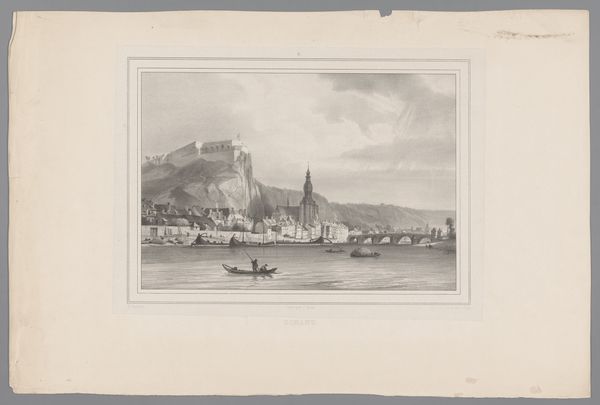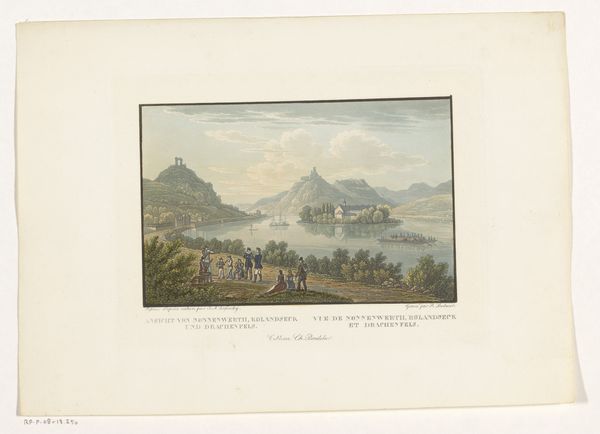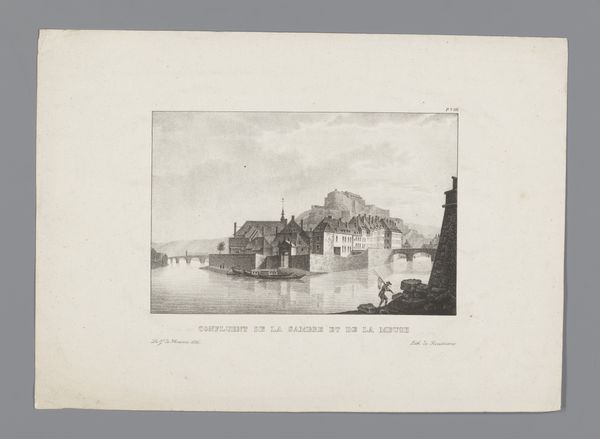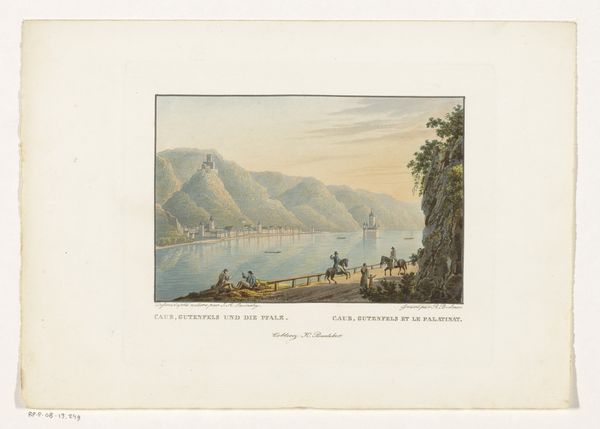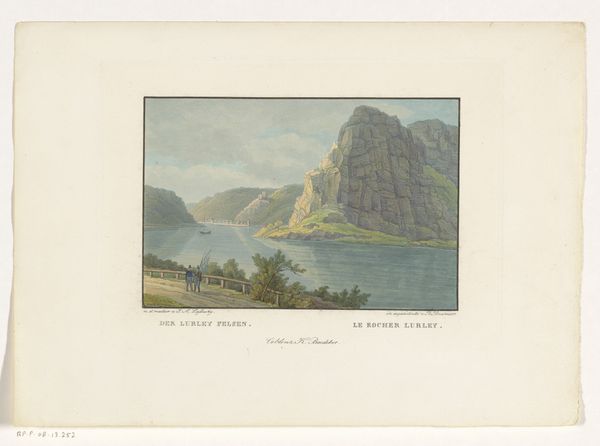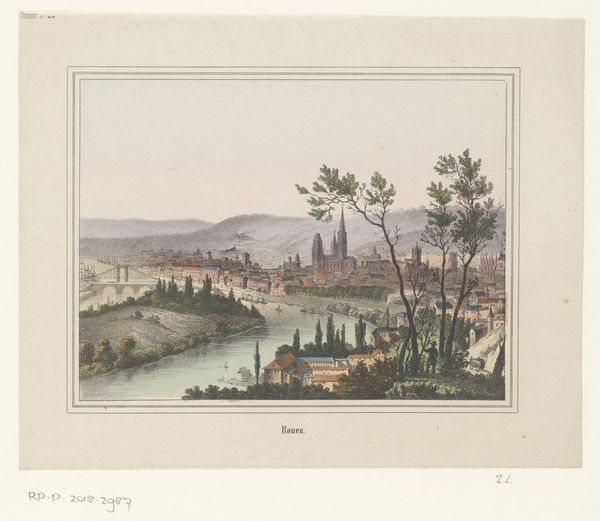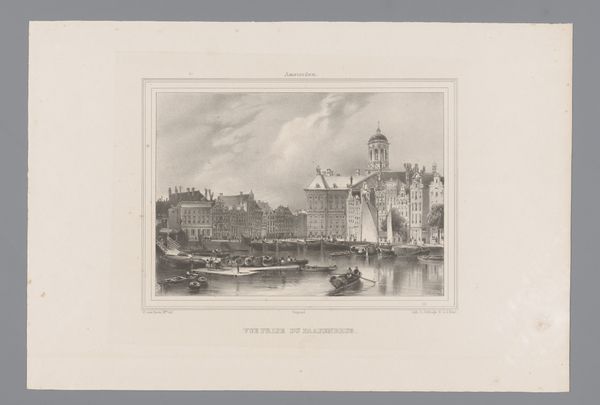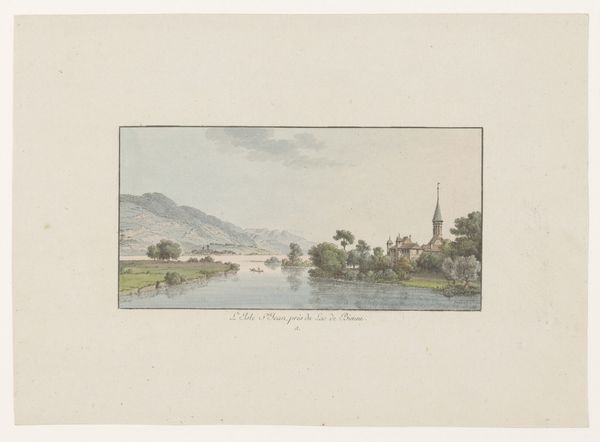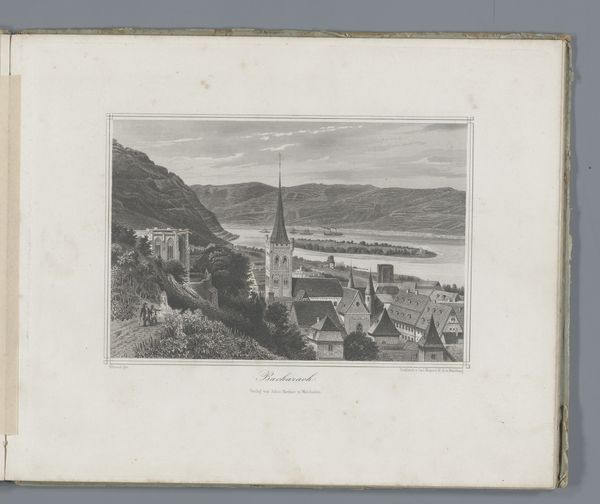
Dimensions: height 119 mm, width 160 mm
Copyright: Rijks Museum: Open Domain
Rudolf Bodmer created this image of Koblenz and Ehrenbreitstein using etching and colored aquatint. This printmaking technique involves coating a metal plate with a waxy, acid-resistant substance called ground. The artist then scratches an image into the ground, exposing the metal. When the plate is submerged in acid, the exposed areas are etched, creating recessed lines. For a color aquatint like this, different areas of the plate would be treated to hold varying tones of ink, and printed in succession. The resulting print has a soft, watercolor-like effect, which was very popular in the 19th century for topographical views. This particular scene captures the confluence of the Rhine and Moselle rivers, a major trade route. Prints like this were often made as souvenirs for tourists, contributing to a burgeoning market for picturesque imagery. Understanding how this print was made gives us a deeper appreciation for the skilled labor involved, and the ways in which images were consumed in an era before photography became widespread.
Comments
No comments
Be the first to comment and join the conversation on the ultimate creative platform.
